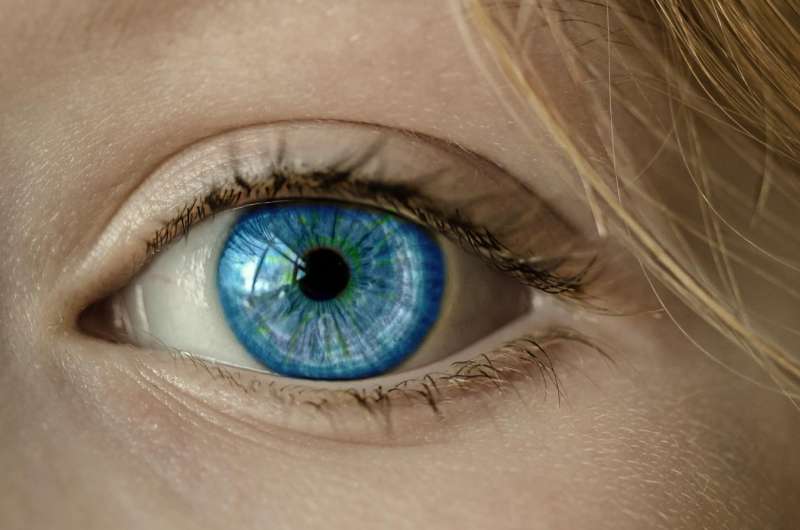Can't get an image out of your head? Your eyes are helping to keep it there

Even though you are not aware of it, your eyes play a role in searing an image into your brain, long after you have stopped looking at it.
Through brain imaging, Baycrest scientists have found evidence that the brain uses eye movements to help people recall vivid moments from the past, paving the way for the development of visual tests that could alert doctors earlier about those at risk for neurodegenerative illnesses.
The study, recently published in the journal Cerebral Cortex, found that when people create a detailed mental image in their head, not only do their eyes move in the same way as when they first saw the picture, their brains showed a similar pattern of activity.
"There's a theory that when you remember something, it's like the brain is putting together a puzzle and reconstructing the experience of that moment from separate parts," says Dr. Bradley Buchsbaum, senior author on the study, scientist at Baycrest's Rotman Research Institute (RRI) and psychology professor at the University of Toronto. "The pattern of eye movements is like the blueprint that the brain uses to piece different parts of the memory together so that we experience it as a whole."
This is the first time a direct connection has been established between a person's eye movements and patterns of brain activity, which follows up on previous studies linking what we see to how we remember.
In the study, researchers used a mathematical algorithm to analyze the brain scans and eye movements of 16 young adults between the ages of 20 to 28. Individuals were shown a set of 14 distinct images for a few seconds each. They were asked to remember as many details of the picture as possible so they could visualize it later on. Participants were then cued to mentally visualize the images within an empty rectangular box shown on the screen. Brain imaging and eye-tracking technology simultaneously captured the brain activity and eye movements of the participants as they memorized and remembered the pictures.
The study, led by RRI graduate student Michael Bone, discovered the same pattern of eye movements and brain activation, but compressed, when the picture was memorized and then remembered.
"This is likely because when we recall a memory, it's a condensed version of the original experience. For example, if a marriage proposal took two minutes, when we picture this memory in our head, we re-experience it in a much shorter timeframe," says Dr. Buchsbaum. "The eye movements are like a short-hand code that your brain runs through to trigger the memory."
By looking at the patterns of eye movement and brain activity, researchers were able to identify which image a person was remembering during the task.
As next steps, the study will explore distinguishing whether the eye movements lead the brain to reactivate the memory or vice versa. Having a greater understanding of this causal relationship could inform the creation of a diagnostic tool using the eyes to catch when a person's memory is headed down an unhealthy path, adds Dr. Buchsbaum.
More information: Michael B Bone et al, Eye Movement Reinstatement and Neural Reactivation During Mental Imagery, Cerebral Cortex (2018). DOI: 10.1093/cercor/bhy014

















